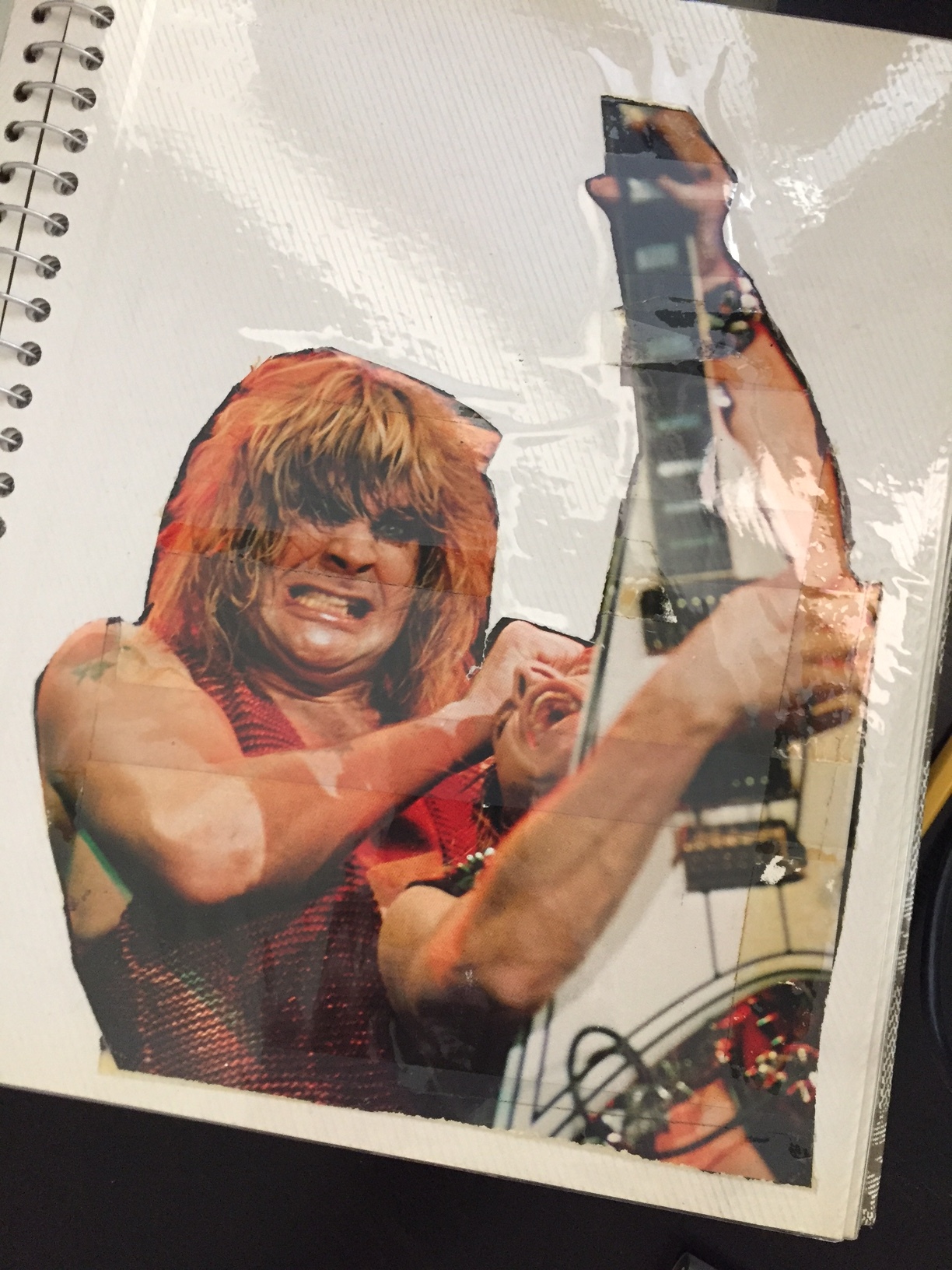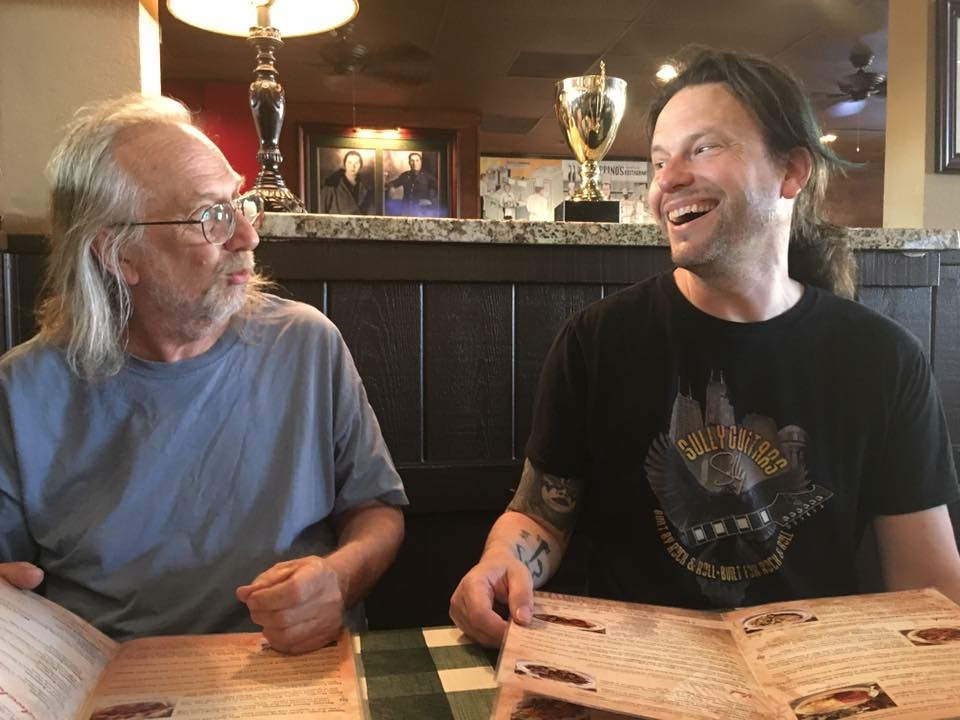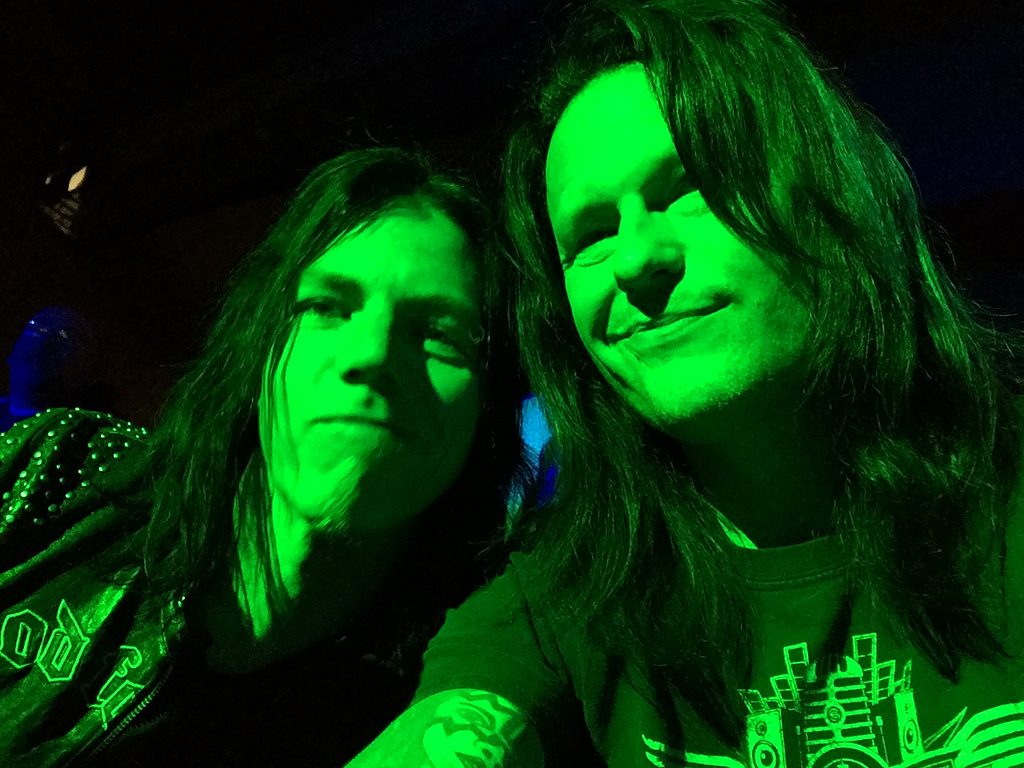Randy Rhoads: 35 years later
Strap in, kids; this is a long one.
Thirty five years ago, I wasn't aware of Randy Rhoads (that happened a year after he passed), and I certainly couldn't fathom how much of an impact he'd have on my life.
One afternoon in the spring of 1983. I was at my friend Kurt Floody's house in Lombard, Illinois. We used to hang out a lot and play sports with the other kids in the neighborhood, listen to music, and draw cartoon "all star band jams" depicting our favorite musicians juxtaposed into supergroup concert settings. This particular day, we were listening to Quiet Riot's Metal Health album, and as I was looking at the back of the cover, I saw a little dedication to the memory of Randy Rhoads. Looking over my left shoulder, I asked "Hey, who's Randy Rhoads?"
Of course, I remember this in a more dramatic and fun manner; the sound of him taking the needle off of the record is the loudest sound ever produced in history. However, Kurt's a guy who takes care of things; he'd never be so careless to ruin a record like that. Instead, without saying a word, he took Metal Health off of the turntable, placed another record on the turntable, put the needle down, and then Over the Mountain happened.
The opening drum fill popped my eyes open, but nothing could have prepared me for the moment I heard that guitar riff. Holy. Fuck. What. Is. This? And then, the solo? Forget it, I was done. Hooked. Flying High Again comes on, and then Believer, and then, and then, and then...you get the point. This was like when I was eight or nine and I saw a photo of Ace Frehley with smoke pouring out of his Les Paul and was compelled to play guitar, or when I heard Van Halen for the first time, but on a whole other level.
After the final notes of Diary of a Madman, Kurt took the record off, put on Blizzard of Ozz, and after being thrilled that there was more to hear, I asked, "What's this song called?" Kurt said "I Don't Know," which confused me. "How do you not know what this song is called?" "...no, dumbass, it's called I Don't Know," "...ohhhhh, okay."
Crazy Train, Goodbye to Romance, Mr. Crowley, Revelation (Mother Earth), all of it was so wonderful. The Mr. Crowley picture disc was last, and it had live versions of Mr. Crowley (which has a different ending from what they later morphed it to become), Suicide Solution, and a b-side called You Said it All (which is one of my favorites) recorded at soundcheck. Kurt even made me a copy of the Ozzy concert from the King Biscuit Flower Hour (which was called "Supergroups"). Too cool. I had the greatest guitar hero in the world, and then I remembered the notes on the back of the Quiet Riot album; "This album is dedicated to the memory of Randy Rhoads." And just like that, he was gone.
From then on, I'd seek out anything I could get my hands on that was Randy related; obviously, I bought Blizzard of Ozz and Diary of a Madman, and ordered back issues of any magazine that made mention of him. I'd draw cartoons of him, and hoped that one day, I'd have a Jackson Randy Rhoads V like his (I used to draw cartoons of "future rock star Sully" playing one. I remember that I had a 1983 calendar from WLUP (a Chicago rock radio station) and Ozzy was in it; he was pulling Randy's head back, so you couldn't really see his face; mostly the guitar. I tore the photo out and hung it on my wall, and later moved it to a photo album where I kept Randy related photos from various magazines (I'd buy 2-3 copies whenever I could; one to keep intact, and the extras were to cut photos from). I even had a sweatshirt airbrushed with a photo of him from his time in Quiet Riot. Totally wish I still had it, but a photo exists. Too bad digital cameras weren't around then; I could have had a shot with my eyes open. :)
Things kinda continued along that path, and I remember being so excited when the Tribute album came out when I was in high school; there was a video for Crazy Train, and it was the most surreal thing to see Randy actually move. I know that sounds odd, but all I knew were photos. Getting a video copy of the After Hours tv appearance was the greatest, but the camera work reflects the style of the time; there seemed to be an attitude of "yeah, it's totally okay to film the bass player while the guitar solo is happening", but whatever, it existed, and it was great. In 1992, Jackson announced a limited edition of 200 guitars to be made like the white pinstripe V. I was 20 at the time, and didn't really have the money for it, but my dad and I figured out a way to make it happen. I bought it on June 24, 1992 (Hm....6/24. Kinda sounds like a Sully model, eh?) and I have it to this day.
As life shifted toward building guitars in the early aughts, Randy's influence persisted. Part of the reason I build guitars is that white pinstripe V; it was just the coolest guitar, and a fantastic example of the era of hot rodded, custom guitars. There were a lot of "new" designs back then; be it body shapes, or new technology. Of course, time and history has shown things that have endured (the Rhoads body shape is one of the most iconic in hard rock/metal guitar history) and things that have fallen by the wayside (I'm looking at you, Washburn Wonderbar). Granted, when I started building guitars, I didn't set out to create the next iconic guitar, and who knows where Sully Guitars will land in the greater scheme of it all, but as Mr. J once told me "we just try to make the next guitar better than the one before it."
At the same time, I found the Jackson/Charvel Forum, which was a small community of enthusiasts (like all forums, really). It was there where I got to learn more about the history of the brand, but in making friends and connections, I got to know some of the people who built the guitars that I love dearly. A lot of what Sully Guitars is today started with the friends I made there, and I can say with certainty that I don't know what my life would look like had I not found that place.
Along with the JCF, I found a couple of Randy themed message boards and groups. It was on the Thunderbird Yahoo! Group (remember them?) where I met a fellow Randy fan and budding guitar builder named Perry Ormsby. We've been pals for years, and our friendship has deepened to a family-like level. But it started because of Randy.
2016 Tribute, 1992 Jackson Tribute, 2016 Sully '71 Trella
When the '71 eventually became more than pencil drawings, I wanted to create some kind of special Randy tie-in, but of course, I'd never build a copy of the white V or any of his other guitars. While running errands with Mrs. Sully one Sunday, I had the idea to take the iconic pinstripes and adapt them to the '71 body shape. In part of creating the 2016 Tribute Series, I was able to have the guitars painted in Grover's shop. To take it one step further, they were painted by Ernie Pedragon, the man who striped Randy's original white v. When Grover and I were building the '71 Trellas, I had Ernie stripe one for me, but in a reverse color scheme. It seemed like a fun thing to do, and it also served the purpose to show that the pinstripe and headstock color of Randy's guitar was metallic midnight blue; not black, as what we thought for years.
I'm a reflecting, sentimental type of guy at times like today, and I often think of how much of my life is tied to that moment in Kurt's basement when I heard Randy's playing for the first time. It absolutely changed me. I learned how to play his music and have spent years trying to be able to play a certain phrase properly (or as best as I'm ever going to). I once got up the nerve to call Musonia and I briefly chatted with Mrs. Rhoads on the phone one rainy November evening in 1998. After a gig in Memphis, I met someone who was in one of the last photos of him (she's on the right, outside of the bus after Randy played his last show in Knoxville, TN). I've been lucky to get to know Andrew Klein, who created the greatest Randy related book, ever. Visiting Musonia, as well as his resting place in San Bernardino. Walking the grounds in Leesburg, Florida where the terrible crash happened (which was oddly serene). Chatting with Grover and Ernie about Randy. Building my own guitars with Grover and becoming friends. Getting to hold some of the guitars Randy used while he was in Quiet Riot. It's surreal, to say the least, and I know that I'm very fortunate to have those experiences. My life was so profoundly impacted by the music that he created in his very short life, and I'm forever grateful.
Thanks Kurt, thanks Perry, thanks Grover, thanks Mrs. Sully, thank you for being interested (on any level) in what I do, and thanks Randy. I hope I did ya proud.
Never underestimate the power of the arts.













